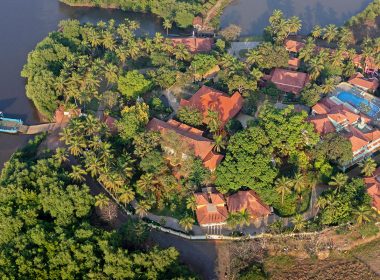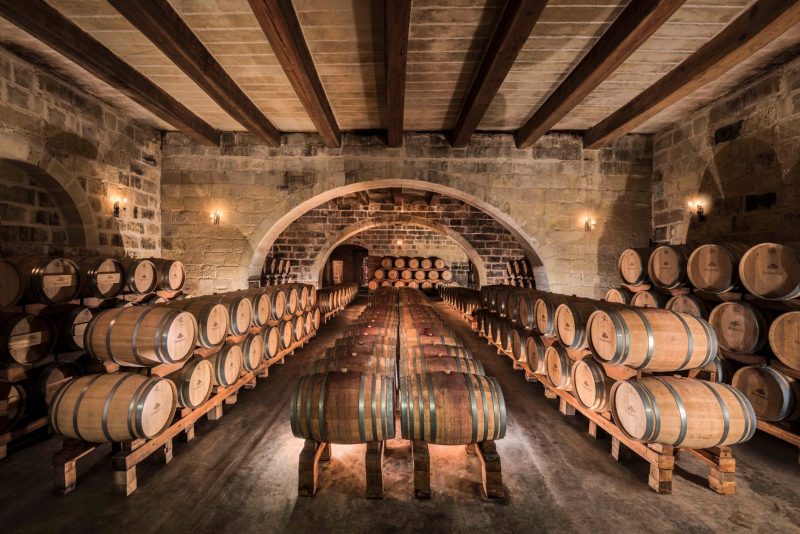When we first thought about moving to Malta, one of the places in Europe with low tax regimes for digital nomads, we imagined the Mediterranean lifestyle: 300+ days of blue skies, plenty of sunshine, fresh food, and living close to the sea.
It also seemed practical — English is spoken everywhere, the island is very international, and services run around the clock. On paper, it looked like an easy place to settle.
The main selling point of Malta, though, was the opportunity to build and grow a business. The tax system and relatively simple setup made it an attractive place to start.
Moving to Malta: What Expats Need to Know About Housing, Rentals, Costs, and Daily Life
The reality turned out to be more mixed. Over three years, we tried three very different ways of living: a big villa in Mellieha, a seafront flat in St. Julian’s, and finally a townhouse in Sliema. Each had its good sides and its problems, from distance and noise to cost and quality. What we learned is that Malta can offer the life you imagine — but not without trade-offs.
Mellieha – €5,500 / month villa with a pool
Mellieha is known as a villa area, surrounded by farms and nature reserves, including the Fauna 2000 preservation area. The area is also famous for its sandy beaches, Danish village, hiking area with nice cliffs, farming area where they shot films, and a secret bay area.


We had viewed several houses, including the so-called Tiger House. We decided against it because it contained too many personal items, and the owners imposed a condition that we could not use the house in August.


Eventually, we found a villa listed at €6,000 and negotiated it down to €5,500 with a six-month advance payment. The deposit was one month’s rent. The deal was made through ReMax Malta.
The villa located in Santa Maria state, was close to the water, a large house with several bedrooms—more than we needed—and a pool. It was, in many ways, the picture of life in the South.
But there were problems. We moved in October, and during winter, Malta has heavy storms and rain. This caused the electric circuits to trip unusually often—several times a week. Each time, we had to reset the smart installations, including the automatic lights and the pool cleaner. It became frustrating, and the owner, living in London, showed little interest in solving the problem, content simply to collect rent.
We also realized Mellieha was too far from where we wanted to be, in the St. Julian’s/Valletta area. A 30-minute Uber/Bolt ride each way was unpleasant. We began searching for something closer and more affordable.
We ended up staying in the house for five months, as we had agreed with the landlord to cancel the contract before the minimum stay period.


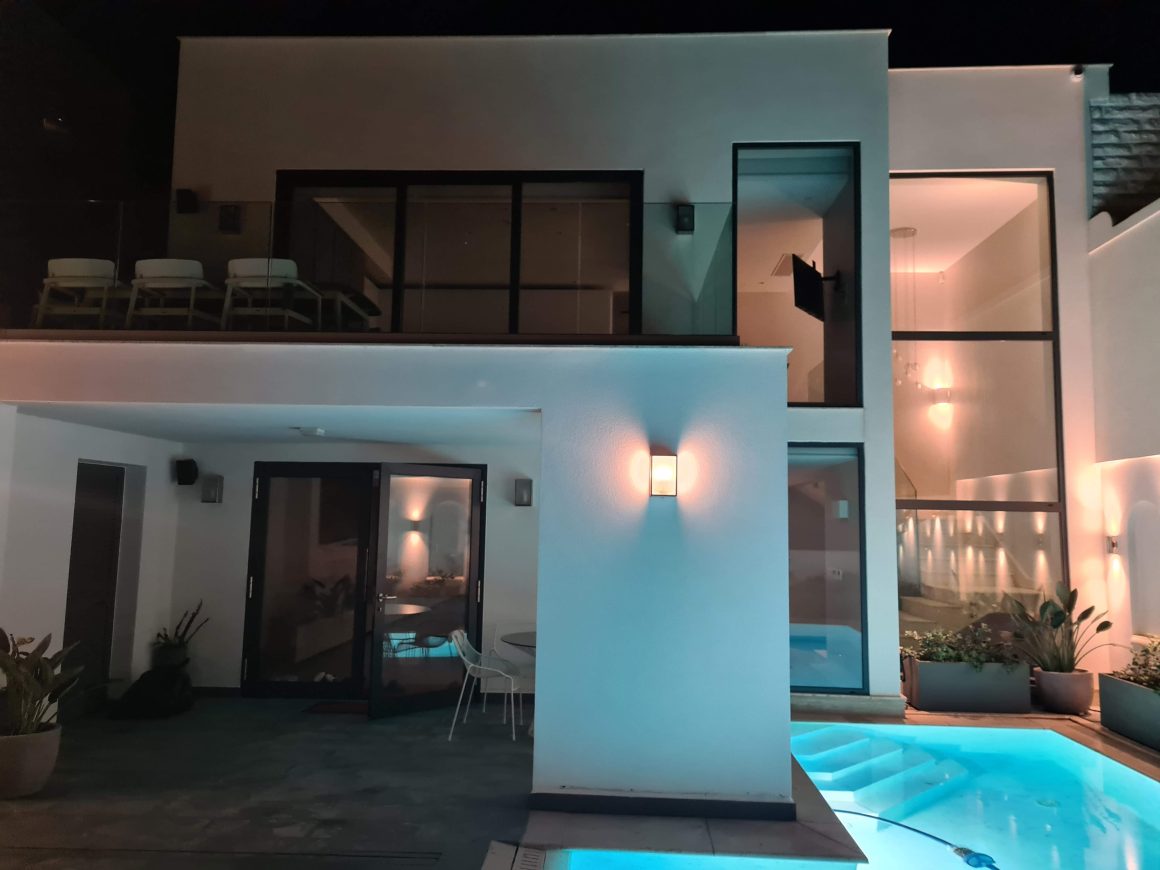



St. Julian’s – €3,400 / month flat
St. Julian’s is Malta’s nightlife and entertainment hub, with plenty of restaurants, bars, and seaside activity.
We looked at numerous flats in the area, including Portomaso. Portomaso is a Dubai-style development (before Dubai became Dubai), built in the early 2000s. It overlooks a marina and is partly gated — most entrances are locked in the evenings, leaving only the main stairs down to the marina open. We didn’t find an acceptable flat there: most were outdated and all were overpriced.
Inside Portomaso Marina, there is a more secluded section called The Laguna, where ground-floor flats have pools directly below and buildings are only two stories high. These are fresher developments with private pool access, but prices start from around €5,000 for a two-bedroom flat. For us, they were too small and too expensive. Still, for someone who wants a quiet, villa-like feeling in Malta’s most densely populated and noisy area, this is probably the best option.


Eventually, we found a flat listed at €4,000 in Spinola Bay and negotiated it down to €3,400 with a three-month advance payment. We liked the minimalist style — it was essentially brand new, with a great view of Spinola Bay.


Unfortunately, the flat came with significant issues—noise and trash.
Noise came from several sources: a downstairs neighbor who often yelled (he was a sports streamer), thin walls and floors with little sound insulation, and constant street noise. Both bedrooms faced the street, where drunk partygoers passed almost every night. The windows offered poor soundproofing compared to what we were used to in Denmark.
In addition, the flat two floors below began undergoing heavy construction. Our landlord oversaw the project, and the buyers—Nigerians planning to acquire Maltese passports—had purchased the flat in shell form.
Trash was also a daily nuisance. In Malta, residents place waste bags on the street for collection on designated days. Our block entrance was often cluttered with bags awaiting pickup.
We ended up staying in the flat for seven months, which is the minimum stay for most rental contracts.










Sliema – €3,700 / month townhouse (house of character)
Sliema is one of Malta’s most densely populated and international towns, with around 55% of the population made up of expats. It is also the heart of Malta’s iGaming sector, where most offices are based. The vibe is urban and fast-paced: cafés spill onto the pavements, gyms and the walkways are full, and new apartment blocks rise next to 19th-century townhouses.


Living in Sliema means convenience: supermarkets, cafés, and ferries to Valletta are within walking distance. But it also means density, traffic, and construction noise. For many expats, though, this is the trade-off for being at the center of Malta’s modern life.
Most rental properties here are flats, with only a handful of townhouses available. Rental prices are among the highest in Malta, though new flats continue to be added each year.
We reviewed a few flats in Tigné Point as well, a large high-rise complex at the tip of Sliema overlooking Valletta. The towers feel modern and new, but the quality is fairly basic considering the prices. The semi-gated setup and shared pool facilities push rents even higher, often matching Portomaso. For high earners wanting a city-style development close to Valletta, Tigné Point can be relevant, though it lacked the character we were looking for.
Initially, we avoided older properties since we preferred a minimalist style. But after countless viewings with a tireless agent, we chose a townhouse in Sliema’s Urban Conservation Area, where facades must be preserved during renovation. The narrow house had several floors and a rooftop terrace with a small “garden”.
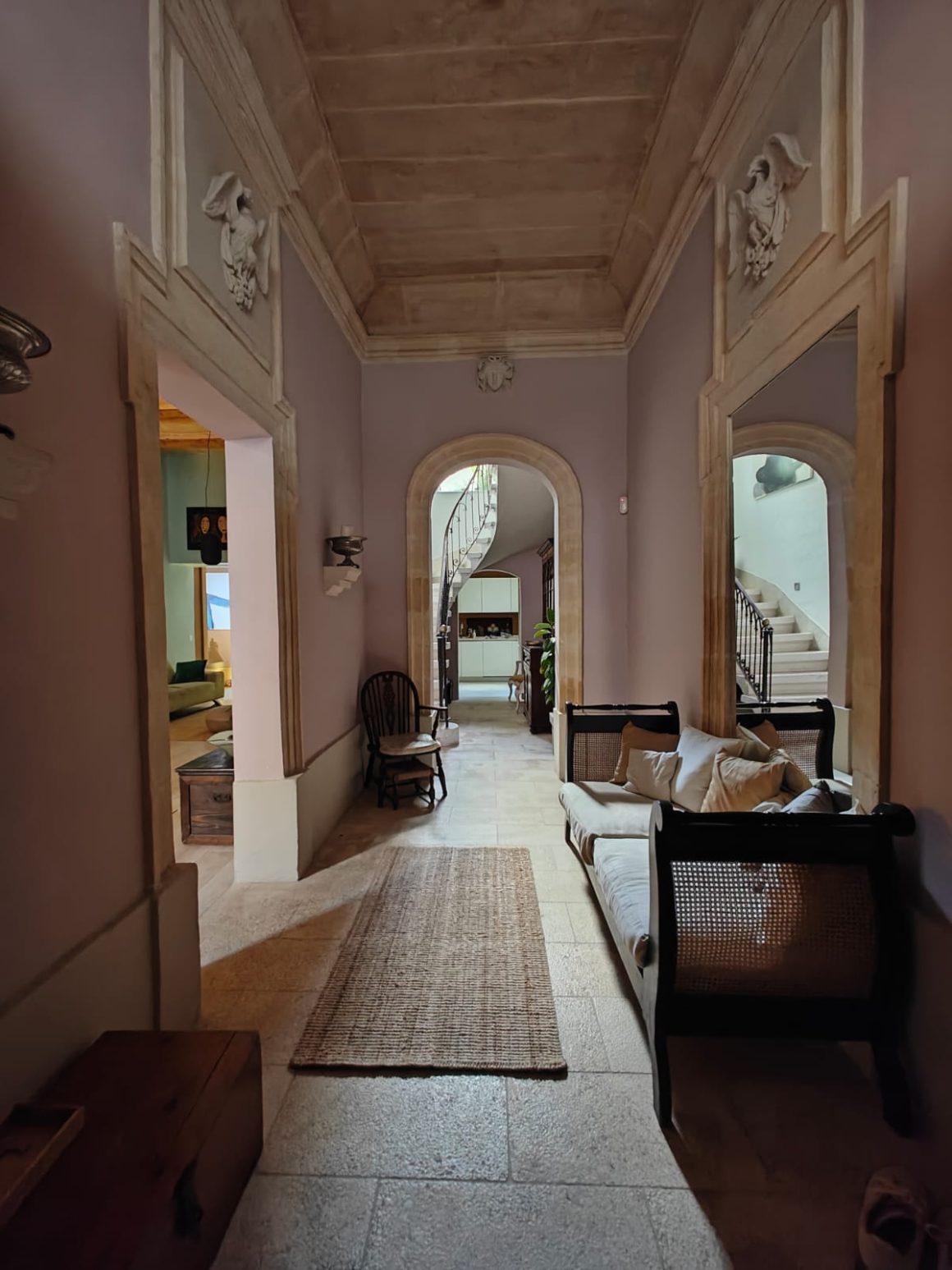







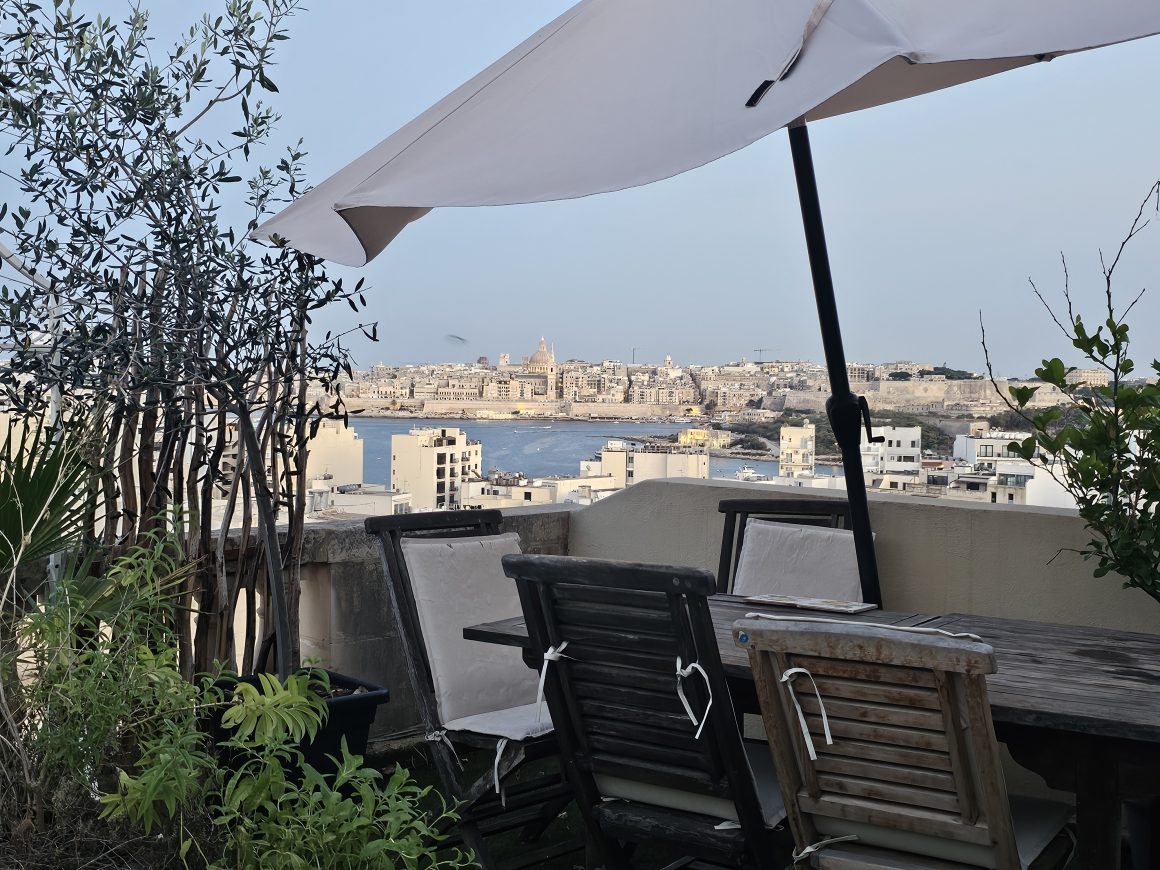

We negotiated the rent from €4,000 down to €3,700 with a six-month advance payment.
This became our longest stay—we lived in the townhouse for two years.


Living in Valletta
Malta’s capital, Valletta, is a world apart from Sliema and St. Julian’s. A UNESCO World Heritage city, it is defined by honey-colored limestone facades, narrow streets, and baroque architecture. The city is undeniably charming and still retains a sense of authenticity, even though very few locals actually live there anymore. Most properties have been converted into boutique hotels or Airbnbs.
In summer, Valletta can feel almost unlivable for residents — more like a theme park than a city. Crowds fill the streets, and bars compete with each other by blasting live music, each house band louder than the next. The atmosphere is lively, but for someone seeking peace, it quickly becomes overwhelming.
Unlike the modern apartment blocks across the bay, most housing in Valletta consists of renovated townhouses or small boutique-style apartments. I tried to find a rental here early on in our time in Malta, but quickly realized there is very little available for long-term rent. The majority of properties are short lets catering to the tourism market.


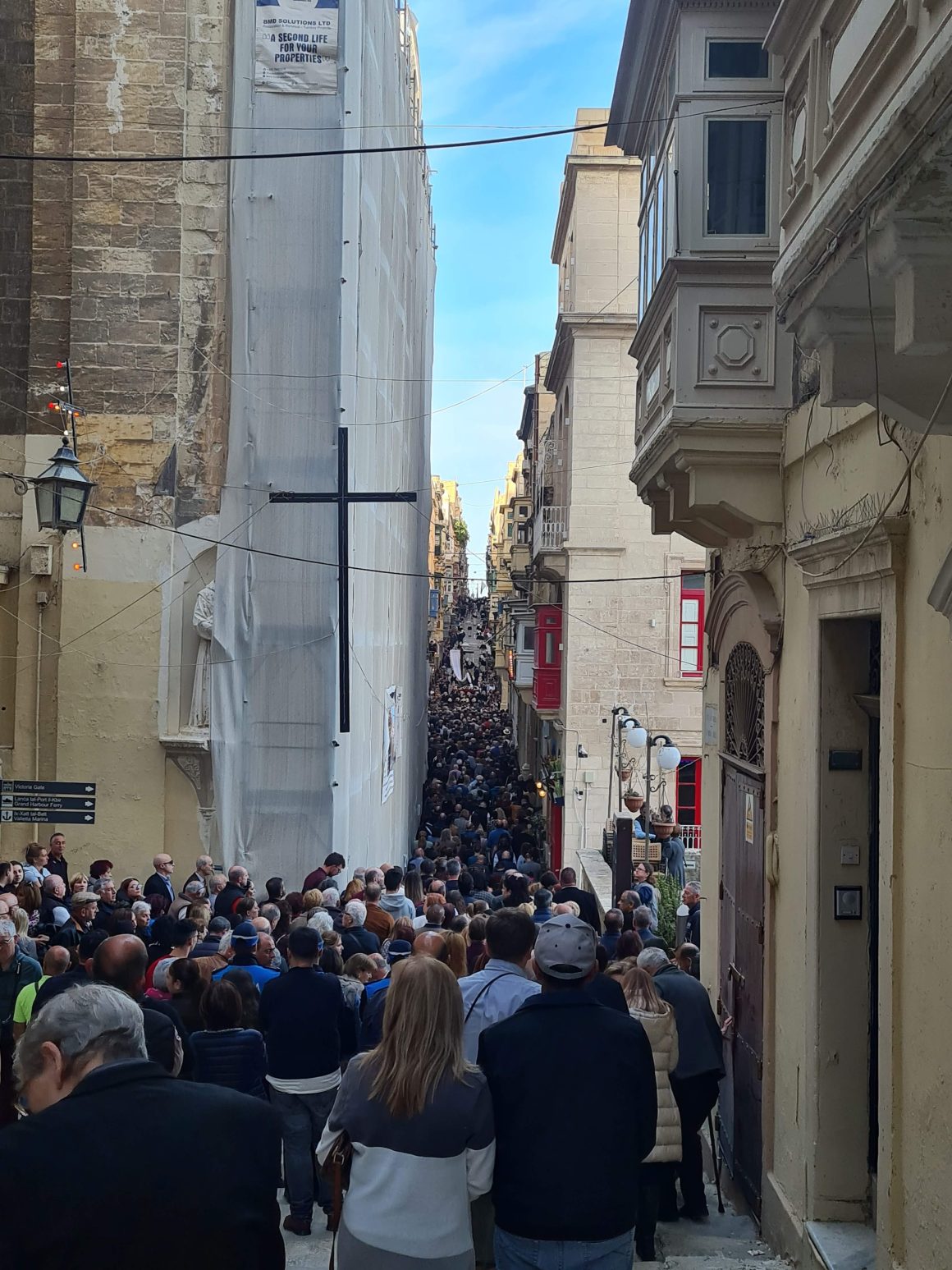



Gozo
Gozo is Malta’s smaller, more rural sister island — greener, quieter, and far more traditional. Beaches are plentiful, and unlike Malta’s main island, they rarely feel crowded. For anyone seeking space, nature, and a more low-key lifestyle. In Malta related expat forums, it seems especially popular among British and American retirees.


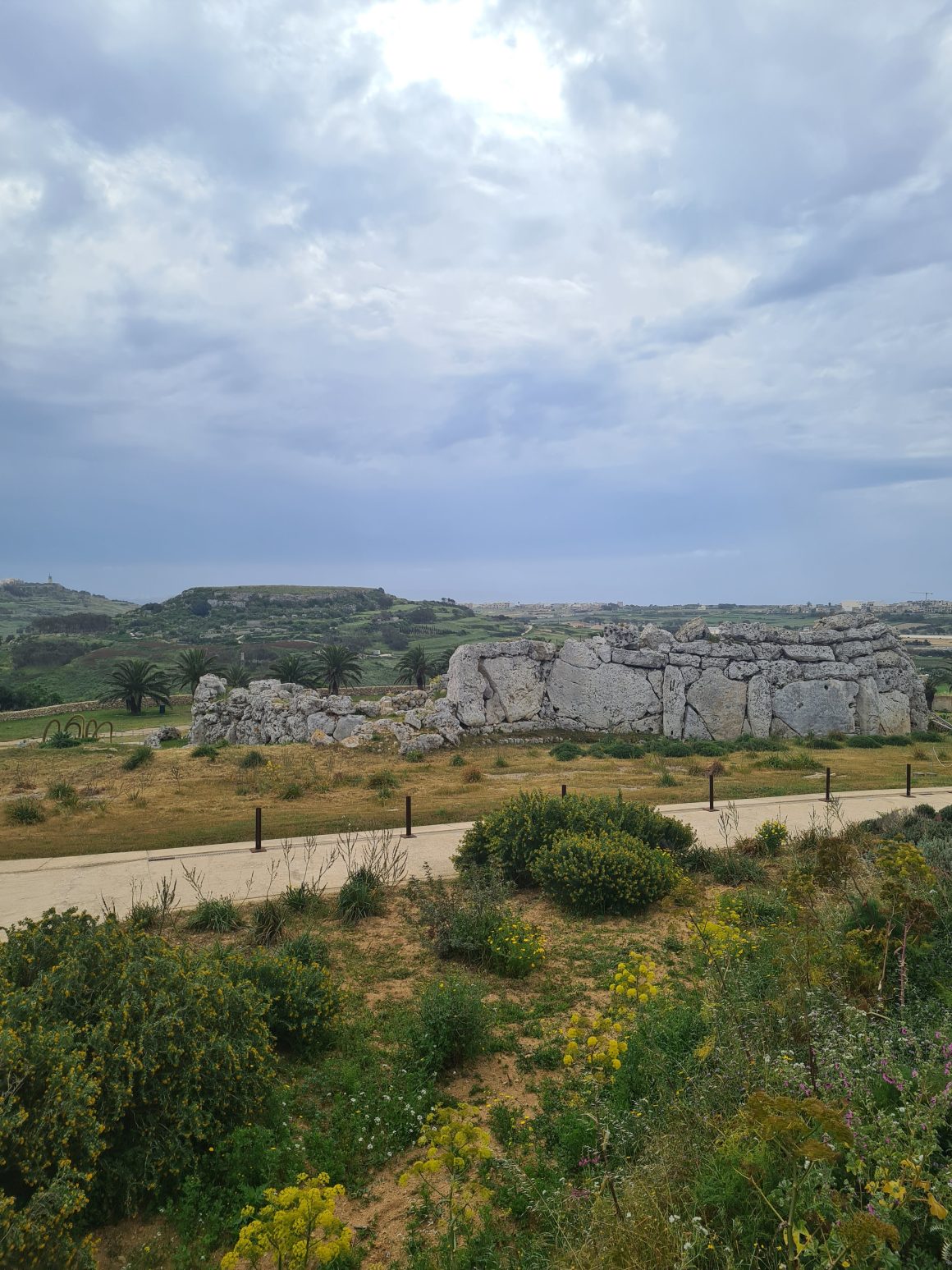



Rental Agents
Our overall experience with major agencies has been positive. We first used ReMax, then Frank Salt, and finally Sotheby’s. They were generally responsive and eager to show us many listings, especially before we moved to St. Julian’s and later to Sliema.
Fees were the same across agencies: half a month’s rent plus 18% VAT.
Malta Rental Stock
We have lived in some of the better parts of Malta’s rental market. Coming from Denmark, where people are willing to spend a large portion of their disposable income on housing and interiors, we found Malta’s rental stock limited in style and quality. Much of it resembles what we have seen in Italy and Spain. Minimalist, fresh rentals are rare and very expensive, often €5,000+ per month.
Another frustration: most listings on agency websites are not actually available. They are kept online to attract interest and then revived if the property returns to the market. In our experience, Frank Salt was somewhat better, as they added tentative dates. ReMax also had dates but less reliably. Sotheby’s was the worst in this regard, possibly because they have a smaller number of listings.
There are many other agencies, as real estate is one of Malta’s main industries, alongside tourism, iGaming, and construction.
Buying in Malta
After paying high rents month after month, buying inevitably came into the conversation. On paper, Malta’s property market looks tempting: owning seems more stable than handing over thousands of euros to a landlord with little guarantee of maintenance. But, just like renting, the reality is layered with complications.
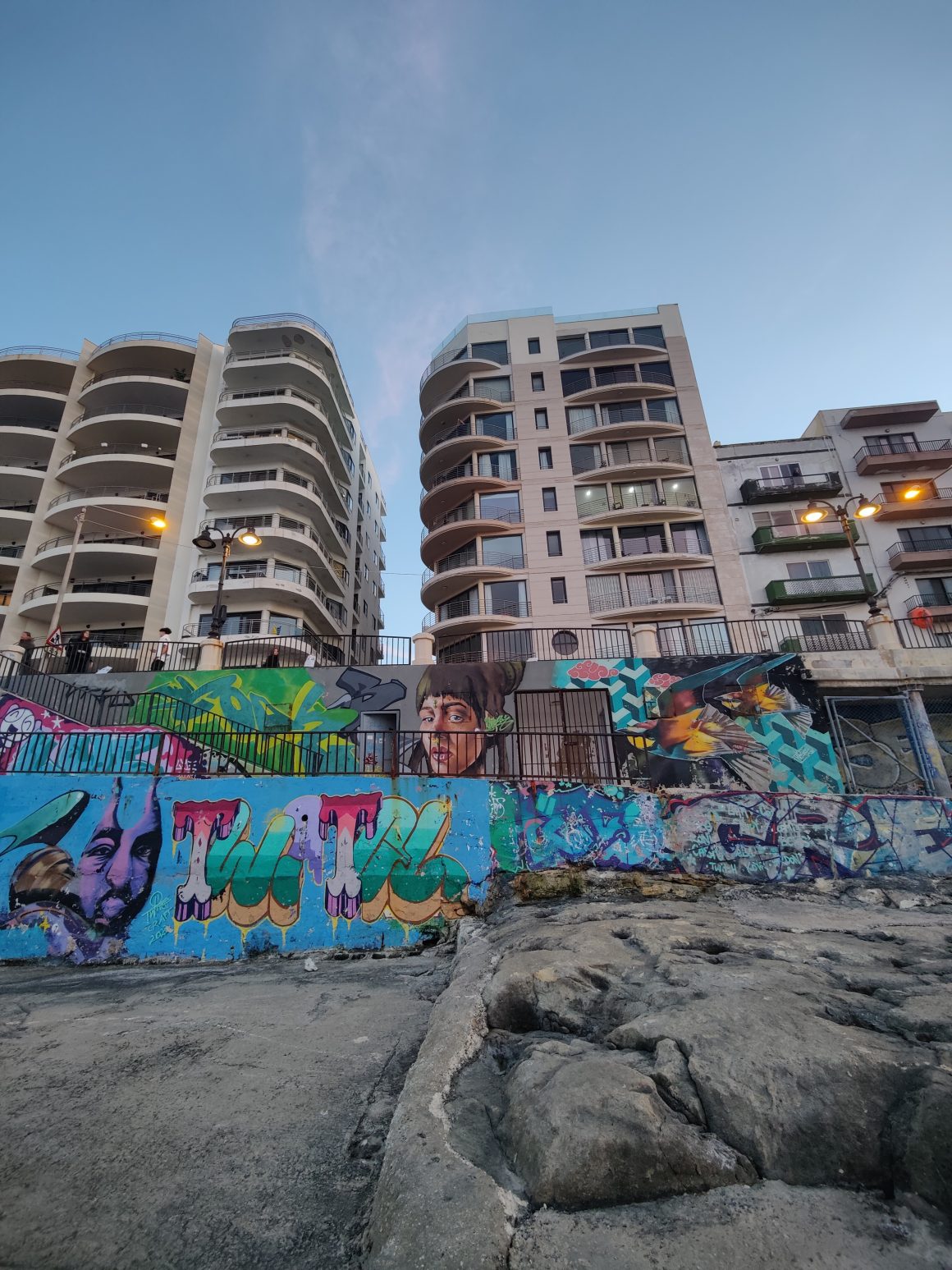

Property prices in Malta are among the highest in Southern Europe when measured against quality. In Sliema, St. Julian’s, and Valletta, apartments and townhouses often command a premium solely for their location, rather than their finish. A flat with dated interiors, thin windows, and basic insulation can still sell for well over €500,000. Larger villas and seafront properties move into the millions.
The market is heavily influenced by foreign buyers. For example, non-EU nationals purchasing citizenship or residency under Malta’s schemes have helped maintain steady demand. Note: it is no longer possible to by citizenship diretly. Many homes are bought more as investments than as places to live and they are often empty in long periods, from what we can see.
Cost of Living
While rent in Malta can feel disproportionately high, the cost of living in other areas is relatively reasonable. Everyday expenses are often lower than in Western Europe.
Fresh fish from the supermarket costs around €5 for 200 grams. A standard loaf of bread is about €2, while traditional Maltese ftira bread can be found for as little as €0.35. A coffee in a café is typically €2, and a bottle of prosecco in a restaurant starts at around €22.


Getting around is affordable by local standards. A trip with Uber or Bolt from the airport to Sliema costs between €11, with Bolt usually offering the cheaper option, although Uber often runs aggressive promotions. The ferry between Sliema and Valletta costs just €2.
Cultural life is also accessible. A ticket to a modern dance performance by ŻfinMalta, the national dance company, starts at €20, while classical concerts are priced similarly.
Also a gym membership is somewhere between €40–80 per month. For basic fitness, Reflex is a good option at around €235 for 3 months. If you want more facilities, such as classes, a pool, and a sauna, LivingWell at the Hilton Hotel is one of the better choices, although memberships are priced at around €90–120 per month.
Finally, utilities are approximately €80-150 for both water and electricity for 2 people, slightly higher if you need a constant room temperature inside.


In the end, Malta works if you treat it as a temporary stop — two or three years to grow a business or save money before moving on. But you can’t cut corners on housing: cheaper flats mean old furniture, cockroaches, thin walls, and constant noise.
Even the better apartments are surrounded by Airbnbs, tourists, and church bells that ring day and night. Pest control is part of the routine, and while we didn’t see rats, the island is overpopulated and they keep on building. Life here can be rewarding, but only if you budget enough for comfort and accept the trade-offs.





